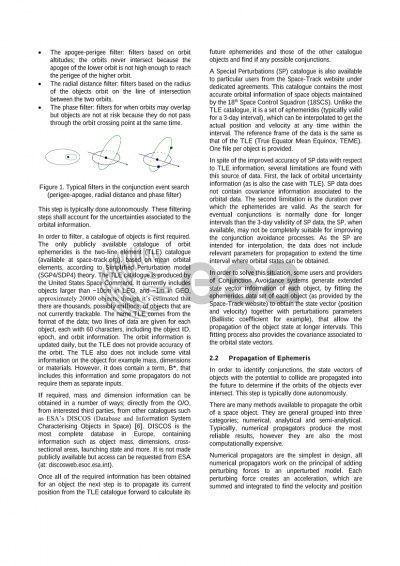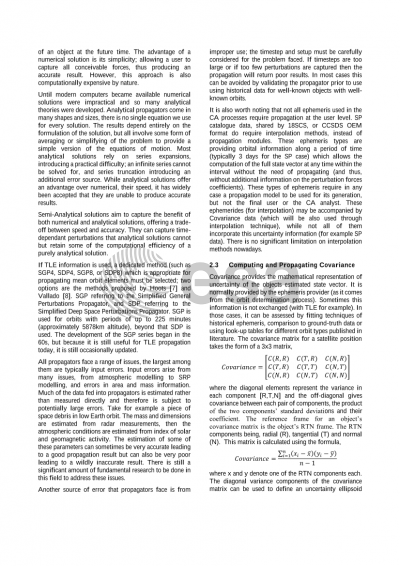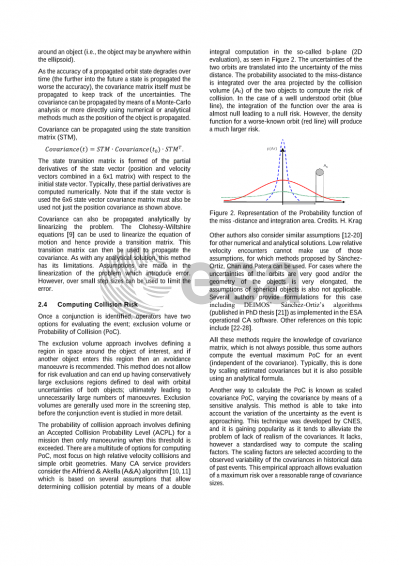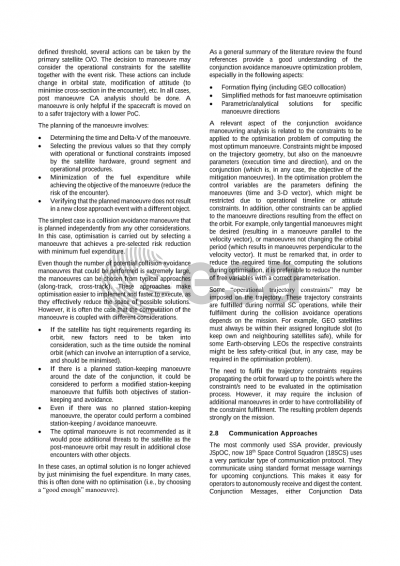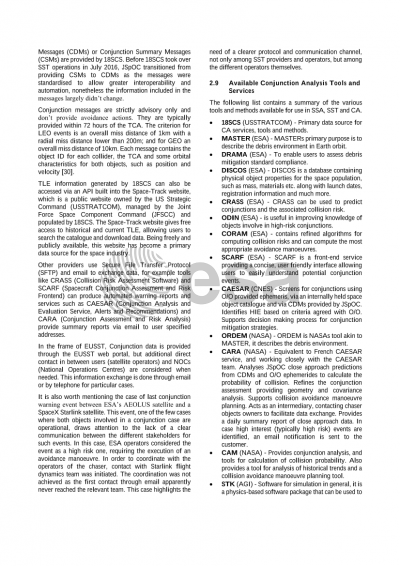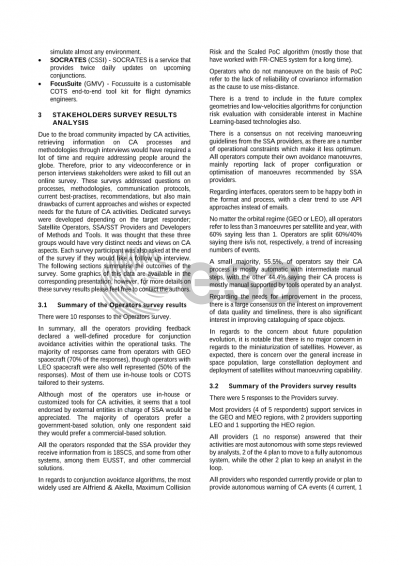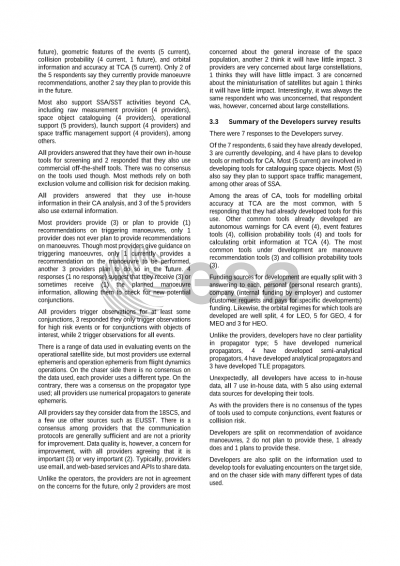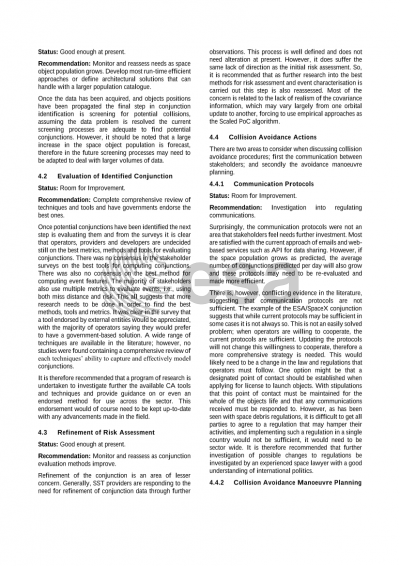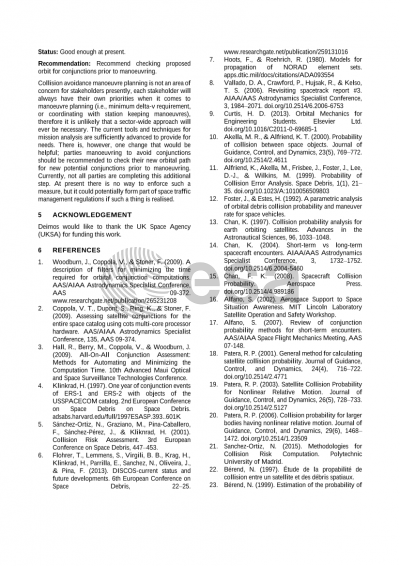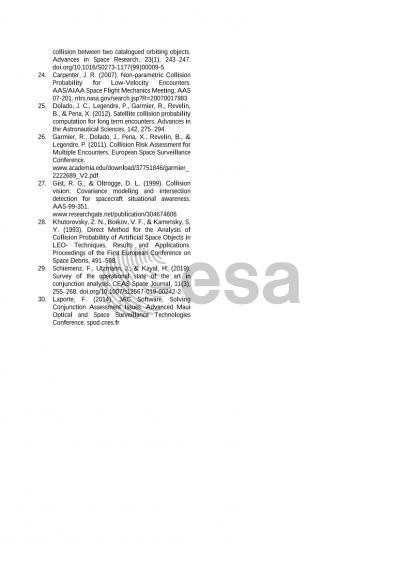Document details
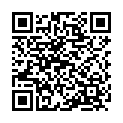
Abstract
In order to accurately characterise the state of the art in Conjunction Analysis (CA) methods, processes and software Deimos UK conducted first a literature review and then a survey of stakeholders in the community within the Collision Assessment Processes and Software (CAPROS) project for UK Space Agency, in first quarter of 2020. These stakeholders fell into 3 categories; Satellite Operators, SSA/SST Providers and Developers of Methods and Tools. The survey addressed questions on current processes, methodologies, communication protocols and best practices, and also the expected future needs for CA activities. The survey was carried out via an online questionnaire and follow up interviews. The results of both the literature review and the survey will be discussed in detail herein.
The results of the literature review turned up a clearly defined process for CA. However, many different methods for detection and analysis of collision events are available. This was also reflected in the available software tools for CA, many different options exist with different methods embedded. Furthermore, multiple metrics for identifying high interest events were found in the literature. In practice, not all methods found in the literature are used, therefore the stake holder survey was of paramount importance in discovering the currently used methods and the needs of the community moving forward.
The survey produced many interesting results which will be discussed in detail herein; following are a few of the key conclusions. Across the three group there was no general consensus on the best methods, tools or software, with each group having their own opinions, and even conflicting opinions within the groups. This reflects the lack of consensus in the literature. On the level of automation in services, there was a clear divide with developers and providers pushing towards full automation and operators taking the more conservative approach of maintaining some manual input in CA activities. However, there was one area in which all group agreed; the future needs and concerns. All groups responded that they were concerned about the evolution of the space environment and the increase in the space population. The also feel there needs to be an improvement in the data available in CA, both in timeliness and in accuracy.
The work discussed herein was funded by the UK Space Agency.
Preview

